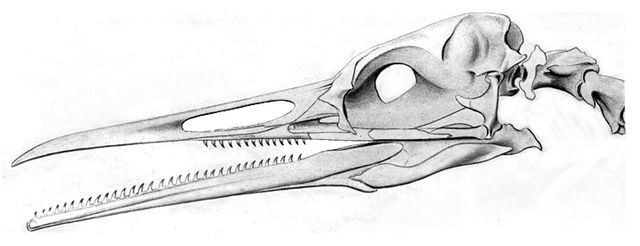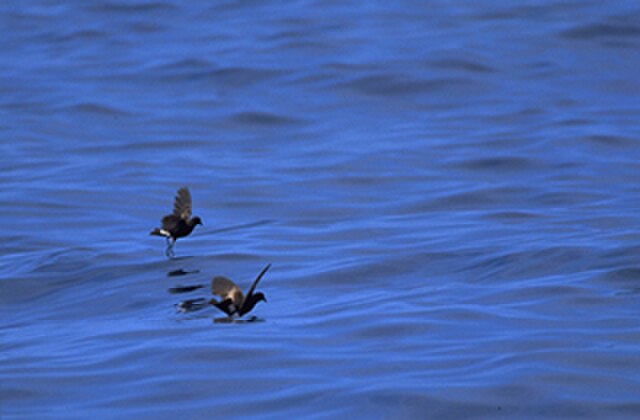The diving petrels form a genus, Pelecanoides, of seabirds in the family Procellariidae. There are four very similar species of diving petrels, distinguished only by small differences in the coloration of their plumage, habitat, and bill construction. They are only found in the southern hemisphere. The diving petrels were formerly placed in their own family, the Pelecanoididae.
Diving petrel
Image: Pelecanoides garnotii By Roar Johansen
Image: Pelecanoides georgicus (South Georgian diving petrel) (8365384976)
Image: Pelecanoides urinatrix 2 SE Tasmania
Seabirds are birds that are adapted to life within the marine environment. While seabirds vary greatly in lifestyle, behaviour and physiology, they often exhibit striking convergent evolution, as the same environmental problems and feeding niches have resulted in similar adaptations. The first seabirds evolved in the Cretaceous period, and modern seabird families emerged in the Paleogene.
The sooty tern is highly aerial and marine and spends months flying at sea, returning to land only for breeding.
The Cretaceous seabird Hesperornis
Cormorants, like this double-crested cormorant, have plumage that is partly wettable. This functional adaptation balances the competing requirement for thermoregulation against that of the need to reduce buoyancy.
Wilson's storm petrels pattering on the water's surface








